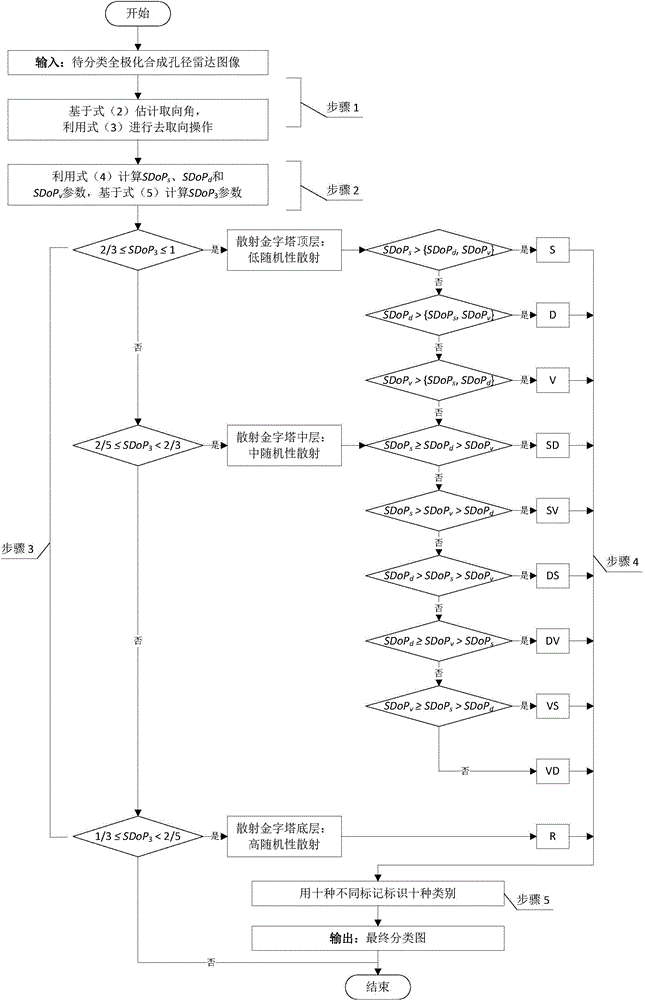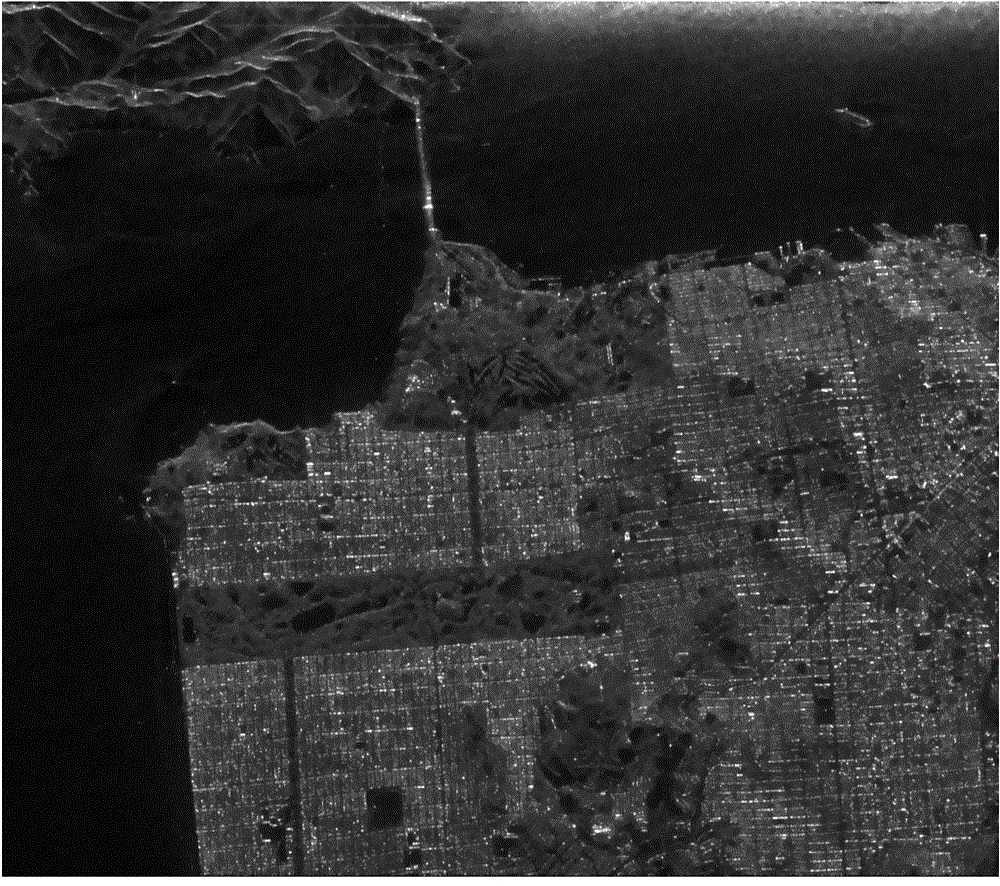Method for classifying scattering pyramids facing polarimetric synthetic aperture radar images
A technology of aperture radar and classification method, applied in character and pattern recognition, instrument, scene recognition, etc., can solve problems such as no implementation plan
- Summary
- Abstract
- Description
- Claims
- Application Information
AI Technical Summary
Problems solved by technology
Method used
Image
Examples
Embodiment Construction
[0041] The present invention will be further described now in conjunction with accompanying drawing.
[0042] refer to figure 1 and figure 2 , the scattering pyramid classification method facing full polarization SAR image of the present invention comprises the following steps:
[0043] Step 1), read in the coherence matrix of the image to be classified and perform de-orientation processing;
[0044] Step 2), from the results obtained in step 1), obtain the preference degree (SDoP, Scattering Degree of Preference) parameter SDoP of the target to surface scattering, two-sided scattering and volume scattering respectively s、SDoP d and SDoP v , and the average preference parameter SDoP 3 ;
[0045] Step 3), based on the SDoP obtained in step 2) 3 Construct a three-layer pyramid model, representing high, medium and low scattering random situations from bottom to top;
[0046] Step 4), based on parameter SDoP s 、SDoP d and SDoP v The permutation and combination of step ...
PUM
 Login to View More
Login to View More Abstract
Description
Claims
Application Information
 Login to View More
Login to View More - R&D
- Intellectual Property
- Life Sciences
- Materials
- Tech Scout
- Unparalleled Data Quality
- Higher Quality Content
- 60% Fewer Hallucinations
Browse by: Latest US Patents, China's latest patents, Technical Efficacy Thesaurus, Application Domain, Technology Topic, Popular Technical Reports.
© 2025 PatSnap. All rights reserved.Legal|Privacy policy|Modern Slavery Act Transparency Statement|Sitemap|About US| Contact US: help@patsnap.com



